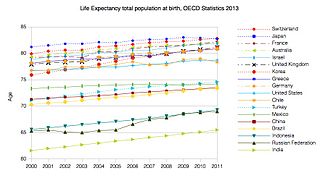Health care reform- is for the most part, governmental policy that affects health care delivery in a given place. Health care reform typically attempts to:
A health system, also sometimes referred to as health care system or as healthcare system, is the organization of people, institutions, and resources that deliver health care services to meet the health needs of target populations.

Health care or healthcare is the maintenance or improvement of health via the prevention, diagnosis, and treatment of disease, illness, injury, and other physical and mental impairments in people. Health care is delivered by health professionals in allied health fields. Physicians and physician associates are a part of these health professionals. Dentistry, midwifery, nursing, medicine, optometry, audiology, pharmacy, psychology, occupational therapy, physical therapy and other health professions are all part of health care. It includes work done in providing primary care, secondary care, and tertiary care, as well as in public health.
Publicly funded healthcare is a form of health care financing designed to meet the cost of all or most healthcare needs from a publicly managed fund. Usually this is under some form of democratic accountability, the right of access to which are set down in rules applying to the whole population contributing to the fund or receiving benefits from it.
Health insurance is an insurance that covers the whole or a part of the risk of a person incurring medical expenses, spreading the risk over a large number of persons. By estimating the overall risk of health care and health system expenses over the risk pool, an insurer can develop a routine finance structure, such as a monthly premium or payroll tax, to provide the money to pay for the health care benefits specified in the insurance agreement. The benefit is administered by a central organization such as a government agency, private business, or not-for-profit entity.
Universal healthcare is a health care system that provides health care and financial protection to all residents of a particular country or region. It is organized around providing a specified package of benefits to all members of a society with the end goal of providing financial risk protection, improved access to health services, and improved health outcomes.
Health care in Ireland is two-tier: public and private sectors exist. The public health care system is governed by the Health Act 2004, which established a new body to be responsible for providing health and personal social services to everyone living in Ireland – the Health Service Executive. The new national health service came into being officially on 1 January 2005; however the new structures are currently in the process of being established as the reform programme continues. In addition to the public-sector, there is also a large private healthcare market.
Social welfare, assistance for the ill or otherwise disabled and the old, has long been provided in Japan by both the government and private companies. Beginning in the 1920s, the Japanese government enacted a series of welfare programs, based mainly on European models, to provide medical care and financial support. During the post-war period, a comprehensive system of social security was gradually established.

Health policy can be defined as the "decisions, plans, and actions that are undertaken to achieve specific healthcare goals within a society". According to the World Health Organization, an explicit health policy can achieve several things: it defines a vision for the future; it outlines priorities and the expected roles of different groups; and it builds consensus and informs people.
South Koreans have the right to universal healthcare, ranking first in the OECD for healthcare access. Satisfaction of healthcare has been consistently among the highest in the world – South Korea was rated as the fourth most efficient healthcare system by Bloomberg.
Healthcare in Finland consists of a highly decentralized three-level publicly-funded healthcare system and a much smaller private sector. Although the Ministry of Social Affairs and Health has the highest decision-making authority, the municipalities are responsible for providing healthcare to their residents.
Welfare in France includes all systems whose purpose is to protect people against the financial consequences of social risks.
The French health care system is one of universal health care largely financed by government national health insurance. In its 2000 assessment of world health care systems, the World Health Organization found that France provided the "close to best overall health care" in the world. In 2011, France spent 11.6% of GDP on health care, or US$4,086 per capita, a figure much higher than the average spent by countries in Europe but less than in the US. Approximately 77% of health expenditures are covered by government funded agencies.
Healthcare in Georgia is provided by a universal health care system under which the state funds medical treatment in a mainly privatized system of medical facilities. In 2013, the enactment of a universal health care program triggered universal coverage of government-sponsored medical care of the population and improving access to health care services. Responsibility for purchasing publicly financed health services lies with the Social Service Agency (SSA).

Tanzania has a hierarchical health system which is in tandem with the political administrative hierarchy. At the bottom there are the dispensaries found in every village where the village leaders have a direct influence in its running. The health centres are found at ward level and the health centre in charge is answerable to the ward leaders. At the district there is a district hospital and at regional level a regional referral hospital. The tertiary level is usually the zone hospitals and at national level there is the national hospital. There are also some specialized hospitals which do not fit directly into this hierarchy and therefore are directly linked to the ministry of health.

Hungary has a tax-funded universal healthcare system, organized by the state-owned National Health Insurance Fund. According to the OECD 100% of the total population is covered by universal health insurance, which is absolutely free for children, mothers or fathers with baby, students, pensioners, people with low income, handicapped people, priests and other church employees. Health in Hungary can be described with a rapidly increasing life expectancy and a very low infant mortality rate. According to the OECD Hungary spent 7.8% of its GDP on health care in 2012. Total health expenditure was 1,688.7 US$ per capita in 2011, 1,098.3 US$ governmental-fund (65%) and 590.4 US$ private-fund (35%).
The Social Protection Floor (SPF), is the first level of social protection in a national social protection system. It is a basic set of social rights derived from human right treaties, including access to essential services and social transfers, in cash or in kind, to guarantee income security, food security, adequate nutrition and access to essential services.

This article provides a brief overview of the health care systems of the world, sorted by continent.

Healthcare in Luxembourg is based on three fundamental principles: compulsory health insurance, free choice of healthcare provider for patients and compulsory compliance of providers in the set fixed costs for the services rendered. Citizens are covered by a healthcare system that provides medical, maternity and illness benefits and, for the elderly, attendance benefits. The extent of the coverage varies depending on the occupation of the individual. Those employed or receiving social security have full insurance coverage, and the self-employed and tradesmen are provided with both medical benefits and attendance benefits. That is all funded by taxes on citizens' incomes, payrolls and wages. However, the government covers the funding for maternity benefits as well as any other sector that needs additional funding. About 75% of the population purchases a complementary healthcare plan. About 99% of the people are covered under the state healthcare system.







